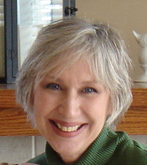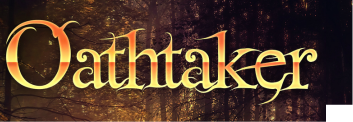First up, is Joshua Grasso, professor of English Literature, and the author of The Count of the Living Death and The Astrologer's Portrait, both available on Amazon.

For example, the novel I’m currently writing came to me in a flash—the initial idea, anyway—from a painting I intended to use in class. The painting is Portrait of a Young Woman (1435) by Rogier van der Weyden. This beautiful, almost photo-realistic portrait of a woman wearing a ‘winged turban’ made me forget my lesson plan. I found myself trying to piece together the expression in her eyes, the rigidity of her body language, and the emotion the painter hoped to capture in the portrait. The germ of a story fell right into my lap, and I’ve spent the past two summers trying to make it into a proper story. I’m light years beyond the photo now, but I still keep it right at my desk to remind me of my initial inspiration.
Sometimes, however, I simply don’t have time to start writing a novel or story on every stray clue from the ancient world. In fact, my most recent novel, The Astrologer’s Portrait, was inspired by a strange character from the Bayeux Tapestry—a person named ‘Turold.’ I read a book about the Tapestry which hinted at who this might be and the wheels started turning. But classes prevented me from doing anything with this for a year, so I simply had to add the clue to my notebook: “Turold in Bayeux Tapestry—sorcerer?” A year or so later I stumbled on the note and it all came flooding back. Three years later the novel was finished, and though it doesn’t resemble the character from the Tapestry in the slightest, I still maintain that the ancient Turold planted the seed of my modern work.
For more about Joshua and his works, see:
Website, The Virtual Astrolabe: www.hblackbeard.blogspot.com
The Count of the Living Death (Amazon): http://www.amazon.com/Count-Living-Chronicles-Hildigrim-Blackbeard-ebook/dp/B00FQ6711Y/ref=pd_rhf_gw_s_t_1
The Astrologer’s Portrait (Amazon): http://www.amazon.com/The-Astrologers-Portrait-Joshua-Grasso-ebook/dp/B00LKQ0DXC/ref=pd_sim_kstore_2?ie=UTF8&refRID=1E8QVX7727JS51MG5KY0

Inspiration comes at me from every direction! Music, other books, news, dreams, conversation, pictures, quotes, you name it! Any of those things can easily set me to wondering how one of my characters might react or how the setting or culture or plot could be changed by employing the “what if” factor. They can spark ideas for new characters and settings, or generate an idea to help me fix problems. In fact…
Read more here.

My story ideas come largely from life. As a young poet of five, I heard my kindergarten teacher say, "Write about what you love and what you know." Write What You Know has become a motto for me. I delve into the people I know, the place where I live, the situations and dramas around me to provide the fodder for my lyrical and literary creations. It is very simple, really. I'm a woman, an artist, a mother, a wife--all these things are in large part instinctual for me. The visceral manner in which I respond to everything I come in contact with inspires me. Emotion and reaction is key. If something moves me, then . . .
Read more here.

My ideas come from numerous sources. Perhaps most notable are those bits of wisdom I’ve come upon over the years, either from some third party, or via some inspiration (or revelation, as the case may be). I like to take these gems and create characters out of them, or use them to move a character through my story or to draw and shape the world in which my stories are told. Sometimes I can use them “as is.” Other times, I ask myself how things might operate but for those principles.
Many people I’ve known over the years, either personally, or via the societal impact those people have had, also have inspired my writing. While no fictional character is the “same” as someone I’ve known or known of, I frequently use characteristics of people I’ve been familiar with to create my own fictional characters. Indeed, it can be incredibly therapeutic to impart some characteristic of a real person, physical or otherwise, to a fictional character, then take the opportunity to praise that character for it—or to put him in his place. In fact, in Oathtaker, there are a couple of conversations that were lifted from my own life. One is a situation when someone asks if it is true that ignorance is bliss. The response: “What is ‘bliss?’” I laugh over this one, because the come-back is exactly the one I gave when someone asked me this very question (once, very long ago): “Never mind. You just answered my question.”
Perhaps the best source for ideas, is music. It inspires brainstorming. When I write, I like to listen to grand movie soundtracks or even the simple notes of a Celtic tune. They get the creative juices flowing. I found them especially useful when I wrote the scene in Oathtaker, when Mara and Dixon, forbidden to be together, confess their love for one another. About them, a fiddler played “a sweet, soft melody that floated on the breeze. It was haunting, sad, doleful, mournful, even. It seemed to urge, to beg listeners to entertain deep, even hidden emotions.” I was listening to just such a tune at the time I wrote that scene. Later, I wrote: “Note by plaintive note, the discordant melody sang of sorrow felt, pain endured, love lost, youth spent.” There are songs, I dare say, that we all could point to from our past, that do just this . . .
As to keeping track of ideas, the computer makes this much simpler than in days gone by. For those times when I am not sitting before my screen, I might email myself something that comes to mind, or jot it down on an iPad app created for such purposes. I would say, however, that the most difficult part of “inspiration” for writing, isn’t so much the source, as what to do with great ideas—and how to identify when one cannot be used. A great idea doesn’t always play out as intended. The key is to know when it has to be “cut.” (Ouch.)
Thank you for joining us. Please do so again!


